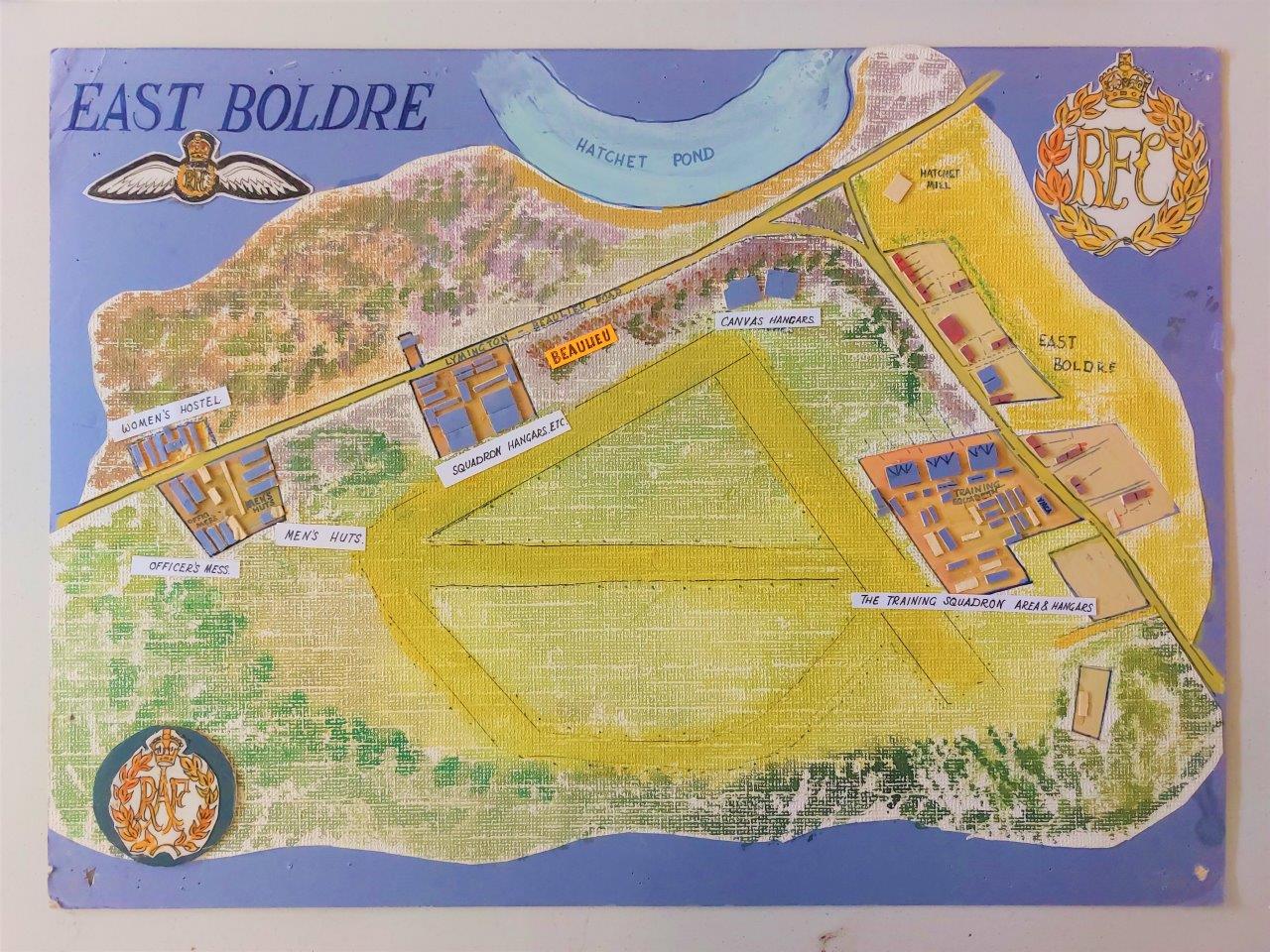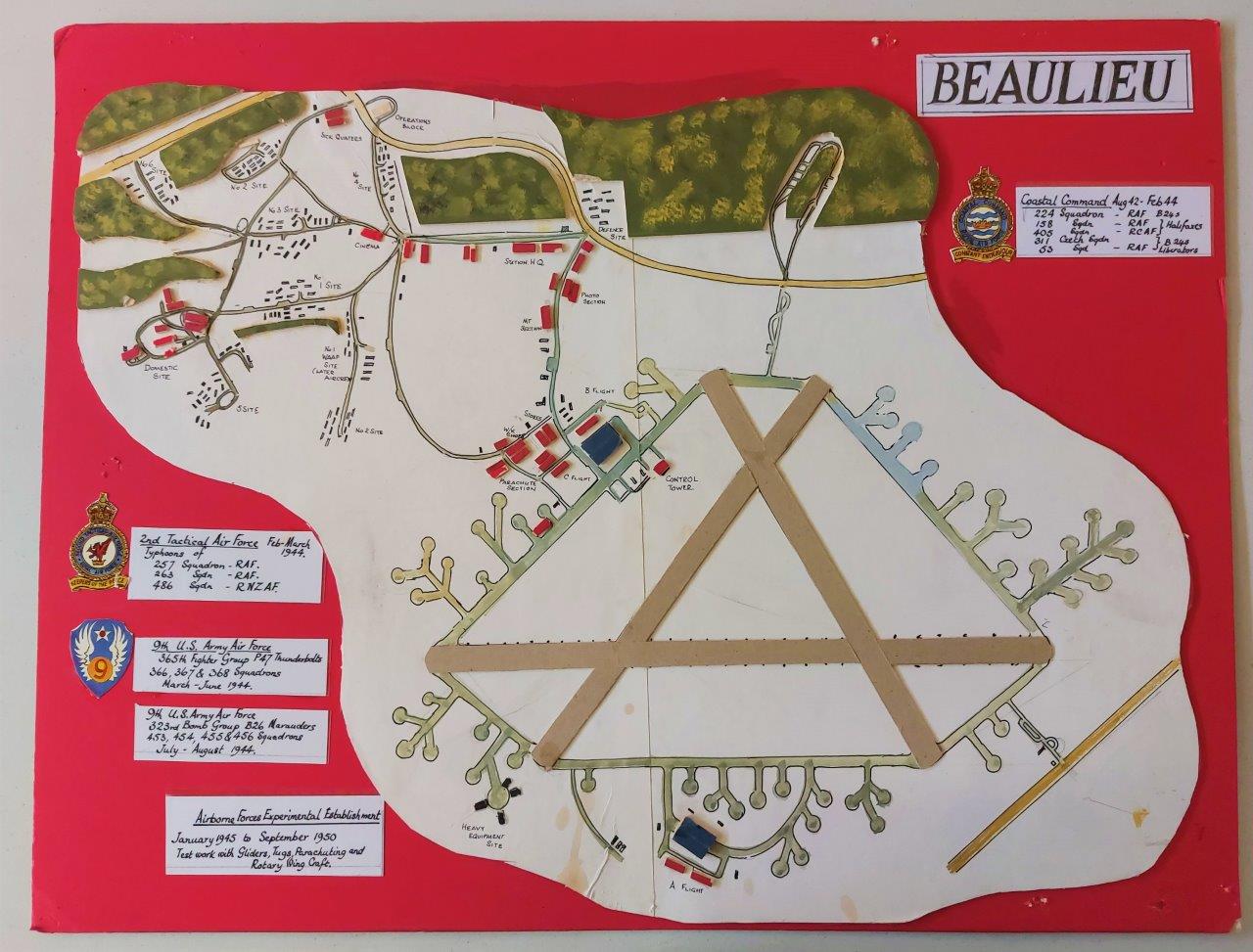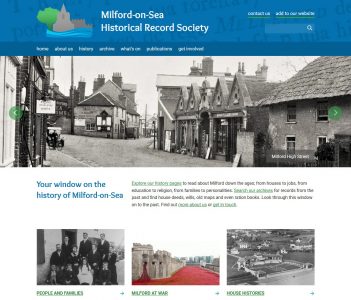A review by Peter Roberts
A Guide to the New Forest was published in 1923 by Charles Brown and son of Ringwood. The guide, although produced more than 90 years ago, is in many ways the best guide to the woods of the New Forest. Sumner shows their character by loving description as well as his very attractive drawings and map. Two editions appeared; without advertisements for 2s 6d (12½p) and with for 1s 6d (7½p)
Sumner, in his preface, said:
This little guide-book is planned for the wayfarer – to suit his pocket both in size and cost. It is written by one who has known and loved the Forest for forty years. It claims to be a handy companion, giving a brief account of the District, past and present, of its topography, history, traditions and scenery; and it aims at supplying a useful introduction to the subject, reminiscent of the past, and of the varied beauty that pervades this wild expanse of wood and heathland….
It is difficult to add to that. He deliberately ignored the church architecture as being described elsewhere but included such delightful descriptions of the real Forest that the book was reprinted not only in his lifetime but also fifty years later. Following the descriptions of the Forest area by area he included chapters on ‘Natural Landmarks’, ‘Forest Terms’ and ‘Forest Notes’. This allowed his readers, then and now, the opportunity to become familiar with Forest terms such as Agister, Assart, Vert, Estover and Turbary. He listed the rights of common and of fuel and even gave brief notes on population in the villages as well as rainfall figures. Lymington had an average of 33 inches for the years 1910-1919 as against nearly 36 inches at Cuckoo Hill where he lived at Gorley and 39 inches at Lyndhurst.
In the areas he works through the place names alphabetically making this a most useful reference book as well as a pleasure to read. Under ‘Picked Post’ he states ‘This place is now usually spelt “Picket,” but “picked” was the spelling in the Ordnance Map of 1817, and in all maps previous to that date…Picked is a Wessex word in present use, meaning pointed…. The name probably referred to the pointed angle of the roads that join here.’
Fascinating accounts of commoning life have been brought together in a new collection of memories and photographs.
Through Our Ancestors’ Eyes features the stories of 20 families and hundreds of photographs depicting commoning, forestry and agriculture in the Forest.
The project was part of Our Past, Our Future, a £4.4 million Landscape Partnership Scheme for the New Forest supported by the National Lottery Heritage Fund. Led by the New Forest National Park Authority in partnership with 10 other organisations, the scheme has undertaken 21 projects to restore lost habitats, develop skills and inspire a new generation to champion and care for the New Forest.
The archive, which includes audio clips plus transcriptions, was created by the Commoners Defence Association (CDA) with help from the New Forest Heritage Centre. Volunteer Patrick Keane, with the help of Kerry Barrass, spent many hours preparing the records for publication on the web.
Hear members of well-known commoning families talk about their ancestors and life in the forest.
All the photographs, audio files and transcripts are stored at the Christopher Tower Library at the New Forest Heritage Centre in Lyndhurst, and are available on the New Forest Knowledge website. https://nfknowledge.org/groups/through-our-ancestors-eyes/
Congratulations to Milford-On-Sea Historical Records Society on the launch of their new website: www.milfordhistory.org.
Explore their history pages, read about Milford down the ages; from houses to jobs, from education to religion, from families to personalities. Search their archives for records from the past and find house deeds, wills, old maps and even ration books. Look through this window on to the past. You can also find information on their meeting, events and publications.
MOSHRS were supported by Heritage Lottery funding to digitise their archive and build this wonderful new site, so once again thanks to all of you who buy lottery tickets and congratulations MOSHRS. Great work!
‘description’:’A view, Stanswood. Copyright Mudge Estate. Image purchased with assistance of the MLA/V&A Purchase Grant Fund: https://www.vam.ac.uk/info/the-ace-va-purchase-grant-fund.’,’colour’: ‘B&W’,’publisher’: ”,’creator’:’Mudge, E.W.’,’place_of_publication’: ”,’format’: ”,’accession_number’: ”,’image_location’: ‘Stanswood’,’object_number’:’FAW3.A70′
‘shelf_mark’: ‘FF11/1.1′,’year_of_publication’:’1992′,’subject’:’Wartime Airfields’,’creator’:”,’material_type’:’Audio Cassette’
On Saturday 10th July a group met in East Boldre Village Hall to celebrate the work of Alan Brown. We all had something in common. We had in our care, exhibition panels, artwork, photographs and research by the late Alan Brown.
Alan John Brown was foremost historian of the twelve New Forest wartime airfields. Born in Wales in 1925, Alan joined the RAF in 1946, a year after the War ended. He decided the only way he could fly was to become a parachute jumping instructor. After two month of training a request was received from the Airborne Forces Experimental Establishment (AFEE) asking for six volunteers. Alan served eight years in the RAF, four of which were at Beaulieu. After leaving the RAF Alan settled in the New Forest as a teacher specialising in Art and History. In his retirement he wrote six books on New Forest airfields.
With his wife, Margaret, Alan put on travelling exhibitions. Like his books, his exhibition panels were all hand drawn at an exceptionally high level, with his instantly recognisable handwriting.
After his death, Alan’s work was divided among various interested parties. For the first time, we attempted to reassemble, catalogue, and photograph it for archive and access purposes. Representatives came together from East Boldre Village Hall, the Museum of Army Flying, Boscombe Down Aviation Collection and the New Forest Heritage Centre, alongside private individuals. This was the first of three proposed meetings as work is completed.
Keep an eye out for material by, or about, Alan Brown as it is shared on New Forest Knowledge here


‘grid_reference’:”,’shelf_mark’:’FF7 Map tank 3, formerly part of FF13-14-02′,’map_envelope’: ”,’map_category’: ”,’map_os_reference’: ‘SU 3400 3500′,’map_revision_date’: ”,’map_coverage’: ‘Beaulieu Heath, Hatchet Moor’,’map_quoted_scale’: ‘1:2,500′,’map_fractional_scale’: ‘[1:2,500]’,’edition’: ”,’comments’: ”,’map_annotated’: ”,’accession_number’: ”,’map_annotation_comment’: ”,’creator’: ‘Ordnance Survey’
‘grid_reference’:”,’shelf_mark’:’FF7 Map tank 3, formerly part of FF13-14-02′,’map_envelope’: ”,’map_category’: ”,’map_os_reference’: ‘SU 3401 3501′,’map_revision_date’: ”,’map_coverage’: ‘Beaulieu Heath, Hatchet Moor’,’map_quoted_scale’: ‘1:2,500′,’map_fractional_scale’: ‘[1:2,500]’,’edition’: ”,’comments’: ”,’map_annotated’: ”,’accession_number’: ”,’map_annotation_comment’: ”,’creator’: ‘Ordnance Survey’
‘description’:’Boat alongside quay. Two men on board and man in hat casting off.’,’colour’: ‘Sepia’,’publisher’: ”,’creator’:’Smith, Theodora’,’place_of_publication’: ”,’format’: ”,’accession_number’: ”,’image_location’: ”,’object_number’:’Comp4.012.018′
‘description’:’Boat hull frame under construction in shed.’,’colour’: ‘Sepia’,’publisher’: ”,’creator’:’Smith, Theodora’,’place_of_publication’: ”,’format’: ”,’accession_number’: ”,’image_location’: ”,’object_number’:’Comp4.012.024′




